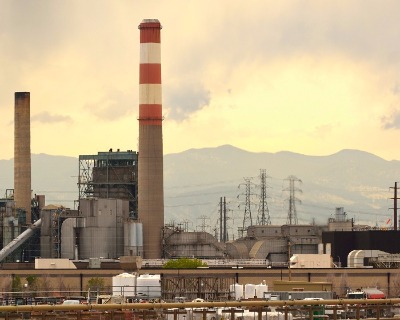Time for a final gasp for US power’s zombie gencos?
Some US merchant power plants have lurched from one crisis to another since they were built and financed a decade and a half ago. Despite the twin threat of low gas prices and ever-higher renewables capacity, can a market redesign rescue them one last time?

Some US merchant power plants have lurched from one crisis to another since they were built and financed a decade and a half ago. Despite the twin threat of low gas prices and ever-higher renewables capacity, can a market redesign rescue them one last time?
They’ve been called (mostly, though not exclusively, by this author) Zombie Gencos: Clutches of generation assets, usually financed around the turn of the century, that have barely stayed financial viable ever since. Neither useful enough to earn their owners a healthy return, nor useless enough to be mothballed, they change hands frequently, as one group of private equity or hedge fund investors after another tries to rouse them from the (un)dead.
Zombie gencos can run on coal, natural gas, or some combination of the two. They can be located in the Western US, Midwest or South. What they usually have in common is a precarious capital structure, despite repeated attempts at restructurings. This year has so far brought three major bankruptcies, with a solid chance that another two are in the wings.
La Paloma: Third time’s less charming
One repeat restructuring candidate is the La Paloma gas-fired plant in California, which filed for chapter 11 bankruptcy protection on 6 December. La Paloma is a 1,200MW facility that has been in operations since 2003. Its owners include EIG and Rockland Capital, two specialised energy investment firms with an appetite for investments in high-risk and distressed assets.
The original owner of La Paloma was California utility PG&E, which had formed a subsidiary to develop merchant plants called National Energy Group. PG&E NEG used a $730 million project synthetic lease, a structure designed to maximise its tax and accounting benefits, to build La Paloma.
Building La Paloma, and its aggressive financing structure, reflected the exuberance of the merchant power market at the start of the decade. Eventually, the loophole that allowed for the use of synthetic leases was closed, and PG&E exited the unregulated power market after its utility arm went bankrupt.
La Paloma went through a series of changes of ownership. In 2002, PG&E NEG agreed to hand over La Paloma and a sister plant in Connecticut to the plants’ lenders. In 2005 those lenders agreed to sell the plant to Complete Energy, a new venture formed by former executives at Dynegy, another troubled merchant generator. Complete used debt financing from WestLB, the German bank that did not survive the 2008 credit crisis, and equity from TCW (which later became EIG) and CIT (a diminished but still extant commercial finance provider) for the purchase.
Complete lost control of La Paloma in 2011, with EIG stepping up as sponsor, and closing a refinancing for the plant with Bank of America Merrill Lynch, SunTrust and Macquarie. Ares Capital, which had made some hires from EIG to form a new power group also participated in the financing.
It still wasn’t enough. While, thanks to the shale boom, gas is relatively cheap to buy, California’s boom in renewables installations has reduced its dependence on gas-fired generation, and the incentives that the state offers to gas plants to make themselves available to assist with grid reliability. Merchant power in California is not much of a money-spinner otherwise, with Calpine, another merchant power producer active in the state, saying that its 3,500MW of capacity is producing only $20 million of free cashflow per year.
“Current market design is not correctly dealing with the temporal nature of solar and the fact that it falls off in the afternoon faster than load does,” notes Wade Schauer, a senior analyst at Wood MacKenzie. “California currently gives solar a high capacity credit, probably about double what it should be. This gives the appearance that California has surplus capacity, and so utilities aren't required to buy capacity from merchant gas-fired plants like La Paloma). As a result, those plants are not getting any capacity revenues to cover their fixed costs.”
There’s some debate about why Rockland and EIG chose to pitch La Paloma into chapter 11 at this time. In October, the Federal Energy Regulatory Commission rejected a complaint from the plant that it was being forced to run without receiving capacity payments as compensation. But lawyers for the plant’s lenders say that the filing took them by surprise. La Paloma’s owners say that issues with poorly-perfected security interests meant that they had to act quickly.
Bigger gencos with bigger problems
Another private equity power plant acquisition landed in bankruptcy court when Sundevil Power filed for chapter 11 in February. The lead lender against Sundevil’s 1,100MW in capacity, Beal Bank, will be debtor in possession lender. Wayzata Investment Partners, based in Minnesota, took over the two units at Gila Bend, Arizona, in 2010.
The reasons for its struggles are familiar, with Wayzata saying that competing older plants did not stop generating as quickly as it had hoped. Gila Bend’s troubles are hardly new. The plant was developed by a joint venture of Panda Energy and Florida utility Tampa Electric in 2001, but handed over to its lenders in 2004. The subsequent owner, Entegra, sold some of the plant’s units to Wayzata, but kept others.
The final, most recent, bankruptcy is the 9 December filing by Illinois Power Generating, which Ameren, a Midwestern utility, had paid Dynegy $200 million to acquire in 2013. Ameren had acquired the five-coal plants, together with an Illinois utility, from Dynegy in 2004. Cheap gas put paid to Dynegy’s plan to profit from that acquisition, and in November 2007, Dynegy put a restructuring plan to the genco’s bondholders that would involve them taking haircuts on their debt holdings.
Dynegy’s run-ins with courts will be familiar to US power lenders. In 2011 it attempted a restructuring that left lenders with a sickly coal-fired portfolio while it retained much of the economic benefits of its gas-fired assets, a programme that attracted criticism from a US Bankruptcy Examiner. In 2004 member of Dynegy’s finance department, Jamie Olis, was sentenced to 24 years in prison for accounting fraud. Olis succeeded in getting his sentence reduced to six years in 2006, and left prison in 2009.
Coup de grace for the zombies
Despite recent drama, the latest bout of financial difficulties lack the seedy glamour of those of the early noughties. But they demonstrate the continued attractiveness of distressed power assets to financial engineers. The 2011 refinancing of La Paloma featured a sparkspread put swaption that was designed to protect the plant against the possible impact of carbon pricing as well as a heat rate call option to protect the plant against price volatility.
Wood MacKenzie’s Schauer suggests that there are two alternatives for these gencos. Either the US government steps in to make the market more welcoming to these fossil fuel generators, or plants start getting retired. “Outside of market design changes, the best hope for stricken plants is that other stricken plants retire before they do and cause capacity market payments to rise.
The fate of older coal plants in bankruptcy will be revealing, especially if they struggle to attract bids. First Energy, another Midwestern utility, yesterday managed to sell its gas and hydro plants but is still trying to restructure the debt against First Energy Solutions, which owns a coal-fired fleet. GE Capital has cut off additional funding to Homer City, a coal plant that it took over in a 2012 restructuring, meaning that the plant will probably seek bankruptcy protection soon.
US project finance lenders will be grateful that they did not get back into merchant power in the US in a big way after the losses they sustained in the early noughties. Bond and leveraged loan investors, as well as US banks, will take the hit in the latest round of restructurings. But with renewables continuing to make inroads in the US, fossil fuel generation, whatever the type, will continue to be a risky prospect without huge changes in market structure.
One Texas utility has seen the writing on the wall. Luminant is selling Lake Creek Ranch – the site of a retired plant, for the value of its land alone. It suggests that a buyer raise cattle there.





